
To date, the entire Class 60 fleet had been owned either by British Rail (Trainload Freight), then Mainline Freight, Transrail Freight, Loadhaul, also EWS and then latterly DBS. During 2010, several members of the class had been offered for sale by DBS, but no buyers were forthcoming offering the right price. It is understood that DBS had indicated that their ‘reserve price’ had not been met.
Further to the twenty-one Class 60s in use by DBS, in April 2014 an announcement had been made through various railway periodicals to the effect that Colas Rail UK had purchased up to twenty Class 60 locomotives that had previously been offered for sale by DBS in 2010. This purchase was a surprise to many rail enthusiasts, as Colas Rail had recently purchased a fleet of ten brand new Class 70 diesel electric locomotives, manufactured by General Electric in Erie Pennsylvania, all of which had been outshopped in the company’s house colour of yellow, black and orange. It is understood that the purchase was made with a view to complementing the existing fleet of locomotives currently under the auspices of Colas Rail UK, though it is thought that in the fullness of time the Class 60s would possibly be utilized on infrastructure duties.
Hitherto the Colas Class 60s had undergone the same detailed Super 60 refurbishment programme as the DBS Class 60s, with work being undertaken at Toton. The staff at both Brush Traction and Toton, along with other organizations involved with the refurbishment of the DBS Class 60s, have clearly demonstrated their ability to put these locomotives back to operational main-line service to a very high standard.
Furthermore, the Toton facility can undertake most of the aforementioned refurbishment work, and any work that cannot be undertaken at Toton will be outsourced to other companies. Following refurbishment, the Colas Class 60s have emerged from the works in the current Colas Rail livery, described in detail in Chapter 5.

An unidentified Class 60 during the advanced stages of its refurbishment at Toton. Various patches of undercoat can be seen as it awaits full repainting in the Colas livery. 23 July 2013. EDWARD GLEED
60021 undergoes the Super 60 refurbishment programme at Toton. This is the interior of the cab at the No. 2 end of the locomotive. COLAS RAIL UK
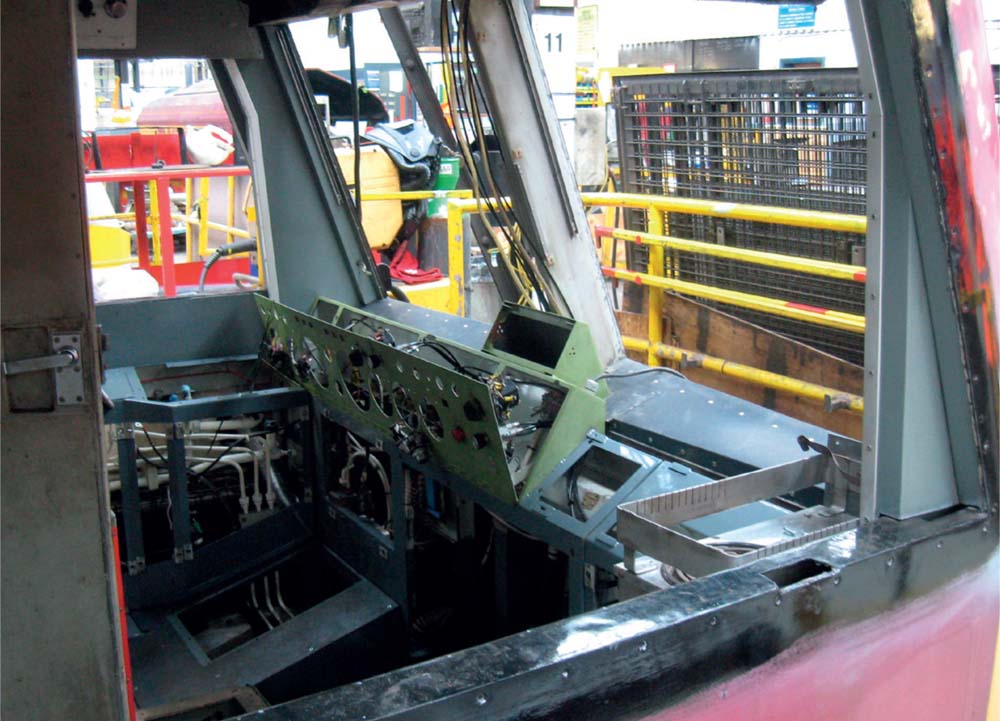
60021’s cab interior at the No. 1 end showing the hinged driver’s desk with all lower covers removed. COLAS RAIL UK
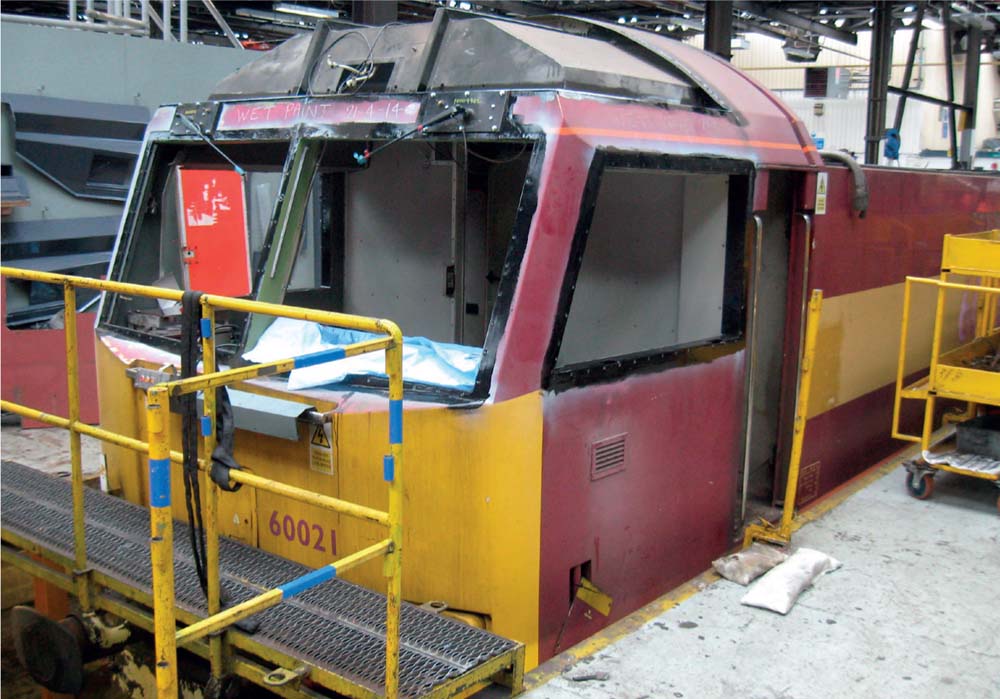
Exterior of 60021 at Toton showing the absence of the cab roof, revealing the missile plate and protruding horn apparatus. Note the painted window surrounds and windscreen wipers. (Image courtesy of Colos Rail UK)
The table below details the locomotives that have been purchased as of 15 April 2014. For the time being they have been assigned to the ‘COLS’ pool, which is the Colas Rail UK’s ‘stored’ pool.9

*First loco for Colas Rail to be released to traffic
This pristine locomotive is 60087, the first Class 60 to be refurbished at Toton by DB Schenker Rail UK for Colas Rail UK in 2014. COLAS RAIL UK
As mentioned in Chapter 6, the first batch of Colas Class 60s to enter revenue-earning service were 60087, 60021, 60076, 60085 and 60002. These Class 60s are listed in the correct order of release to traffic following refurbishment.
60095, 60096 and 60047 are locomotives from the second batch of Class 60s that have undergone refurbishment and are now in traffic.
The remaining Colas Class 60s awaiting refurbishment and subsequent release into traffic are 60026 and 60056.
Details of the Colas Class 60 refurbishment are given in Chapter 6.
On 20 May 2014, 60087 was the first member of the Colas Class 60 fleet to be tested on the main line following refurbishment. It was trialled between Toton and Leicester, hauling a DBS Class 60.
As briefly mentioned in Chapter 5, the first revenue-earning main-line run for 60087 took place on Monday 2 June 2014. The working ran from Toton to Barrow Hill to collect Class 86/7, 86701 Orion, and the duo then continued from Barrow Hill to Washwood Heath. Following on from this run, the locomotive attended the ‘Rail Live 2014’ event hosted by Network Rail at Long Marston; during this event, 60087 was named CLIC Sargent. Since then, 60087 has spent much of its time working between Eastleigh Yard and Hoo Junction, though accessing the Southern Region was done by a working from Rugby depot to Eastleigh Yard.

60087, having completed the Super 60 refurbishment programme. It is viewed from the B side at the No. 2 end of the locomotive during 2014. COLAS RAIL UK
60026 during the early stages of the Super 60 refurbishment inside Toton. It is in the second batch of five locomotives to undergo the work. COLAS RAIL UK
During the latter half of 2014, the Colas Class 60s have been kept for much of the time at Westbury whilst being employed on engineering trips, and this is where 60087 arrived on the weekend of 19/20 July 2014. On Monday 21 July 2014, the locomotive ran ‘light’ engine from Westbury Yard to Cardiff Canton, where it is understood it was required at the depot for train crew familiarization. During August and September 2014 the same locomotive was employed on the 6L63 Llanwern–Tilbury Riverside steel working; the return working was 6V62, 11:20 Tilbury Riverside–Llanwern. This was one of the first of the Colas diagrams to go over to Class 60 haulage. As more Colas Class 60s have been released into traffic, others have been assigned to this diagram.

On a very dull and overcast morning in the London suburb of Gospel Oak, 60021 is at the helm of 6V62, the 11:30 Tilbury–Llanwern steel on 26 November 2014. EDWARD GLEED

60087 with 70804 pass Wimbledon West Junction with 6Z70 08:50 Rugby–Eastleigh West Yard, with 70801 attached to the rear on 4 July 2014. MARK V. PIKE
In June 2015 eight Colas Class 60s were in revenue-earning service, with the remaining two Class 60s in various stages of refurbishment. As more Colas Class 60s were put through the Super 60 refurbishment programme, their sphere of operation widened. To date, many workings for which Colas Rail UK had hitherto used their fleet of Class 56, Class 66 or Class 70 locomotives, now include the Class 60, namely oil (including bitumen) and certain infrastructure diagrams including Rail-Vac duties, which invariably require two locomotives working in ‘top and tail’ mode.
In addition to these diagrams, Class 60 operations now include the timber workings that operate between the paper mill at Chirk to destinations such as Teigngrace, Baglan Bay and latterly Ribblehead, ousting the Class 56s, 66s and 70s on these diagrams. On 1 May 2015, 60076 became the first Class 60 to work the timber traffic, namely 6V54 Chirk–Baglan Bay. It was also allocated to work the empty timber train from Chirk to Teigngrace using the 6V54 headcode from the previous day. Whether any of the Colas Class 60s will undertake charter work and diesel galas is open to conjecture.
A very long 6V62, the Tilbury–Llanwern steel, exits the 4,444yd Chipping Sodbury tunnel hauled by 60085 on a warm 18 March 2015. The village of Old Sodbury can be seen in the distance. EDWARD GLEED

The first Class 60 to work the 6V54 Chirk–Teigngrace log train was 60076. It is seen passing through the Bristol suburb of Parson Street on a cloudy 6 May 2015. EDWARD GLEED
What does the future hold for the Class 60 fleet? At this point in time it is a difficult question to answer.Although at the time of writing there are over a quarter of the original 100 Class 60 locomotives in service, it is not clear how many more will be returned to the main line. This book has discussed some of the problems that have beset the Class 60, but there have been several highlights. In particular DB Schenker Rail UK has returned overhauled Class 60s to the main line, and Colas Rail UK has purchased a number of Class 60s. Also there has been a rise in freight workings following the return of refurbished Class 60s to revenue-earning service.
A Class 60 preservation group website (www.cl60pg.co.uk) has been set up inviting enthusiasts to join the group and/or to make a donation with a view to hopefully purchasing a Class 60 when the Class 60s are no longer required by the TOCs. One thing that is for certain is that the Class 60s have always been hugely popular with train crews and enthusiasts alike, and to this day the latter will still travel many miles to look at this highly acclaimed form of motive power.
A sullen morning of drenching rain gives way to a sunny afternoon. Here at Narroways Junction, 60002 positively storms its way through atop 6M51 Exeter–Chirk logs on 3 July 2015. EDWARD GLEED
It is a credit to DB Schenker Rail UK that they have virtually saved the Class 60 from extinction from the main line, and further credit is due to the expertise and skill of the maintenance staff at Toton depot, who have undertaken most of the refurbishment work and who keep the fleet serviceable. Full credit is also due to the highly skilled staff at Brush Traction (now a part of the Wabtec Rail Group) in Loughborough, both for their painstaking work in eradicating the faults that proved so troublesome during the early years of the Class 60 and for continuing to support the locomotives.
What the rail industry has now is a locomotive that is even better than it was when new, and it is hoped that the Class 60 will continue operating, and will continue to be seen and enjoyed, for many years to come.

60076 leaving the No. 1 loco spur at Bristol Temple Meads whilst en route to East depot to collect timber wagons for 6M51 to Chirk on 19 June 2015. EDWARD GLEED
Oil-seed rape fields spread as far as the eye can see as DB Schenker Class 60 No. 60059 Swinden Dalesman approaches Westerleigh Junction on 21 April 2015. EDWARD GLEED

A disgraceful act of vandalism perpetrated on former Petroleum Subsector 60014 as it awaits a decision on its future amidst the weeds at Toton on 15 July 2014. EDWARD GLEED
A portrait view of DB Schenker Class 60 No. 60039 whilst on shunting duties at Tees Yard on 17 June 2014. EDWARD GLEED

On a glorious summer afternoon the sixth Colas 60 to be overhauled, 60096, is at the head of 6V62 Tilbury–Llanwern steel at Acton Turville, near Badminton, on 6 June 2015. EDWARD GLEED
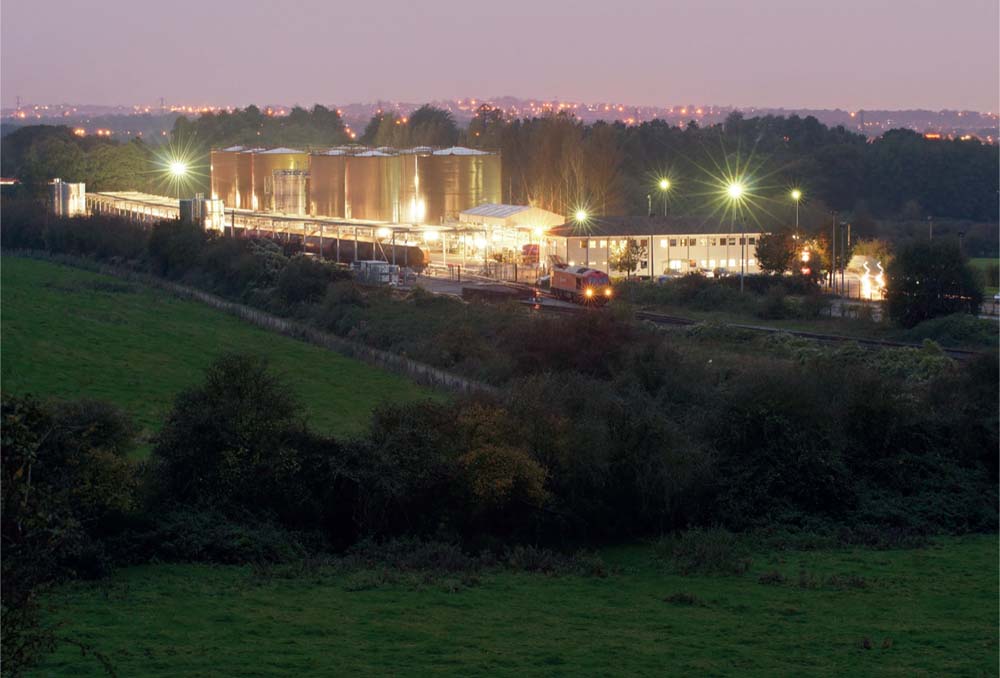
The lights are on at the Westerleigh oil terminal as 60044 prepares to shunt 6B47 to Robeston at dusk on 28 October 2014. The Bristol suburb of Mangotsfield and Downend is seen in the distance. EDWARD GLEED
Following the failure of 60007 at Gloucester while working 6B13 Robeston–Westerleigh tanks, 60079 was sent to assist, and the duo are seen at Wickwar running some three hours late on 4 April 2012. EDWARD GLEED
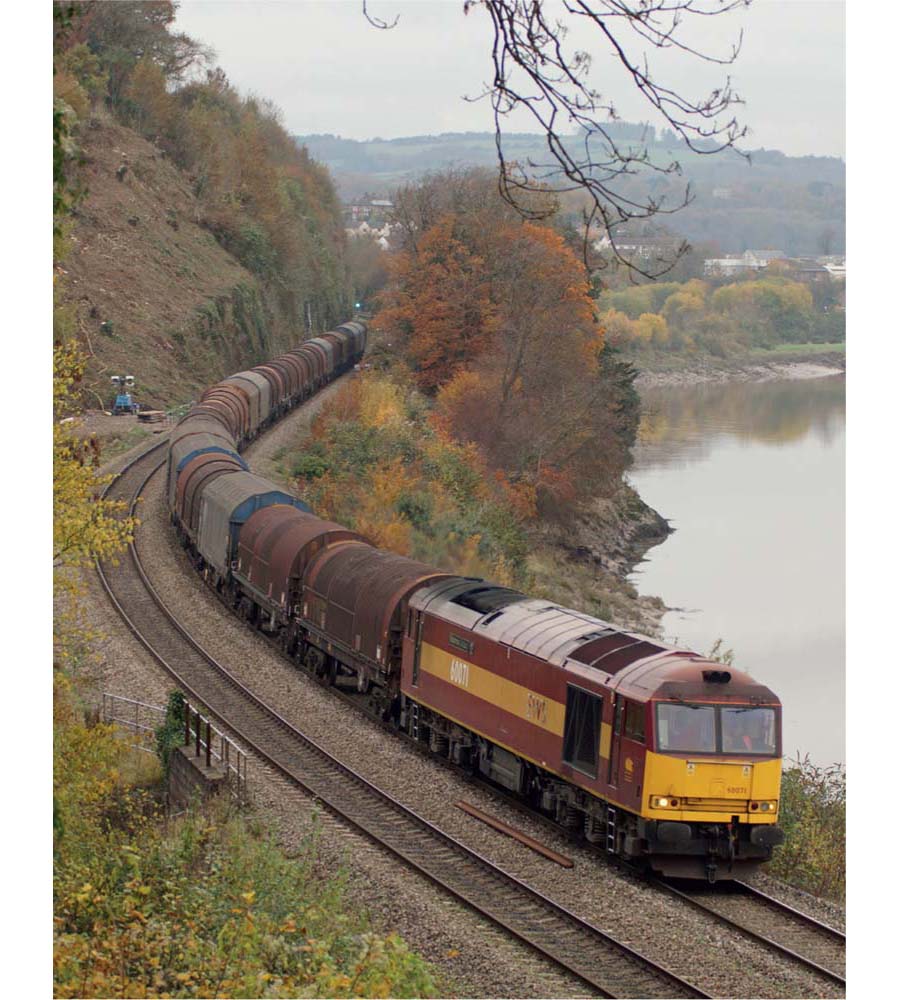
The last remnants of autumn at Thornwell as EWS-liveried Class 60 works 6V05 Round Oak–Margam steel on 28 November 2013. Chepstow is just visible in the distance. EDWARD GLEED
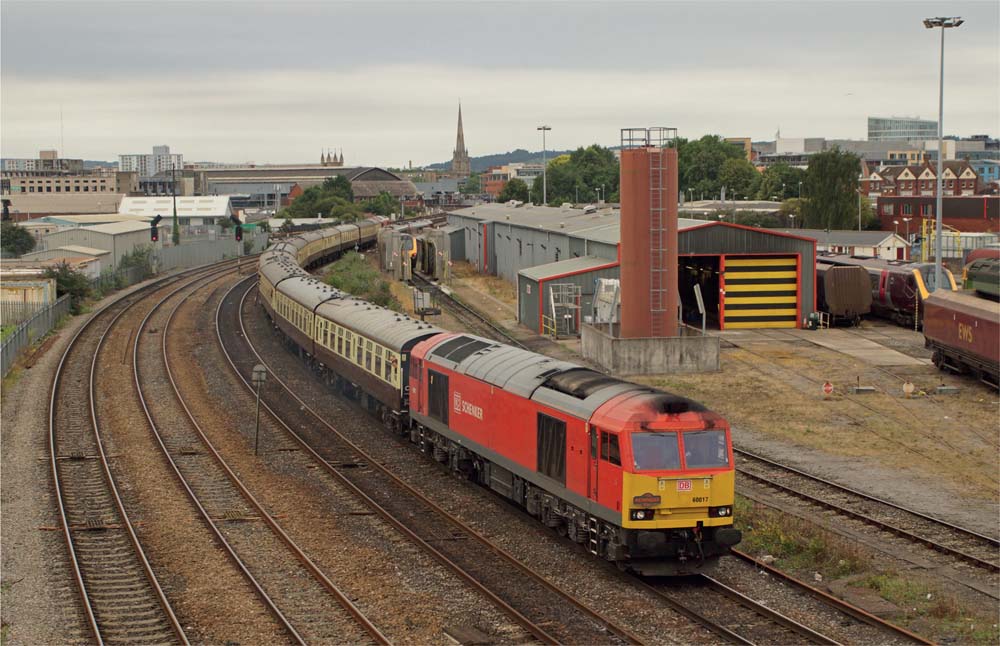
The spire belonging to the parish church of St Mary Redcliffe dominates the skyline as 60017 and 60063 power ‘The Taffy Tug’ railtour past Bristol Barton Hill depot on 25 August 2013. EDWARD GLEED
In the popular location of Peak Forest 60039 Dove Holes is on full power as it lifts the heavy 6F05, 15:10 Tunstead–Lostock aggregate working away from Peak Forest on 16 June 2015. EDWARD GLEED

Cows chew the fat of the land at Purton as DBS 60063 wheels 6B47 Westerleigh–Robeston on a beautiful summer’s evening. The Cotswold hills are seen in the distance on 6 June 2013. EDWARD GLEED